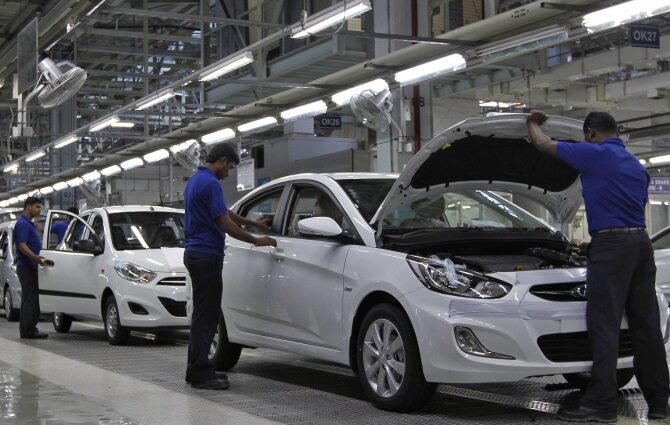Automotive retail sales saw a 14 per cent rise in March on a year-on-year (YoY) basis, according to data released by the Federation of Automobile Dealers Associations (FADA). For the whole of financial year 2022-23 (FY23), sales grew 21 per cent YoY.
For both March and the financial year, all categories, except for tractors, and including two-wheelers, three-wheelers, passenger vehicles (PVs), and commercial vehicles (CVs), posted double-digit growth.
However, the total retail sales of 22.1 million for the financial year were still 12 per cent lower than the pre-Covid (FY20) level of 25 million, owing to an 18 per cent dip in the two-wheeler segment.
In March, two-wheeler sales grew 12 per cent, three-wheelers by 69 per cent, PVs by 14 per cent, and CVs by 10 per cent.
Tractors, however, only grew 4 per cent.
Though two-wheeler numbers rose in March, they were still down by 9 per cent compared to pre-Covid levels in FY20.
“Better supplies coupled with better sales, though at the upper end of the spectrum, kept the meter ticking.
“This, apart from the increase in prices of OBD 2A (on-board diagnostics) vehicles, coupled with multiple festivals in the month kept sales healthy though inquiry levels have now started decreasing,” said FADA president Manish Raj Singhania about the growth in the PV segment in March.
“FY23 was the first full year without any impact of Covid after a gap of two years.
“Consequently, retail sales experienced a growth of 21 per cent during the year,” Singhania said. In the whole of FY23, all categories except for tractors saw double-digit growth, with two-wheelers sales growing 19 per cent, three-wheelers 84 per cent, PVs 23 per cent, and CVs 33 per cent.
Tractors grew only 8 per cent, Singhania said.
The three-wheeler category maintained its growth rate of 84 per cent YoY. Electrification in this category reached 52 per cent, driven by the e-rickshaw segment.
Retail sales of PVs touched a record of 3.6 million vehicles, growing 23 per cent YoY. The previous high was in 2018-19, when retail sales were 3.2 million units.
“The entry-level variant remains under pressure as customers in this category are still affected by high inflation,” Singhania said.
Though tractor sales grew just 8 per cent, this segment, too, clocked record high sales of 827,000 units, beating the previous high of 782,000 units in FY21.
Singhania said that decent two-wheeler sales growth would occur only when there was a recovery in rural demand.
In the two-wheeler segment, Hero MotoCorp saw its market share decrease from 34.35 per cent in FY22 to 32.07 per cent in FY23.
On the other hand, Honda Motorcycle & Scooter India, and TVS Motor saw a marginal increase in their shares during the period.
Among PVs, market leader Maruti Suzuki saw its share decline from 42.13 per cent last year to 40.86 per cent in FY23.
Among three-wheelers, Bajaj Auto’s market share also dipped to 33 per cent, compared to 35.5 per cent a year ago.
Source: Read Full Article
-
Hurricane Ian Donations: Tom Brady, Tampa Bay Bucs Owner Among Those Pledging Funds
-
Eurozone Inflation Hits Double-digit For First Time On Record
-
EU Downgrades Eurozone Growth Outlook; Raises Inflation Projections
-
Asian Markets Track Global Markets Mostly Lower
-
Asci seeks feedback on updating guidelines for education ads


